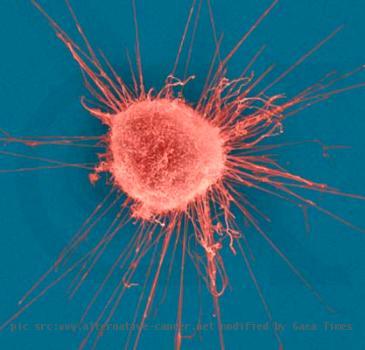Fujitsu’s sensor reads protein to diagnose disease, but applications still years away
By Yuri Kageyama, APFriday, April 16, 2010
Fujitsu’s sensor reads protein to diagnose disease
TOKYO — Fujitsu has come up with a way to analyze proteins for quicker and easier diagnoses of illnesses such as food-poisoning, cancer and the pandemic flu, the Japanese electronics maker said Friday.
But years of research are needed before the bio-sensor can become a real machine at a medical facility.
Developed with the Technical University of Munich, the sensor can diagnose an illness in five or 10 minutes, and requires a far smaller sample of material, Fujitsu researcher Michihiko Aki told reporters.
“It is 100 times faster than current methods,” such as those used to pinpoint food-poisoning causes, he said. “Expectations are high for possibilities in practical use.”
Fujitsu researchers envision tracking the recurrence of cancer and diabetes, and blocking the entry of those infected with flu strains at airports.
Japan — as well as the U.S. and Europe — are galore with ventures and researchers experimenting with all kinds of biotechnology, from biofuels to cancer vaccines, but the critical question is turning all that into something practical, said Shingi Toyama, senior director at Kinki Bio-Industry Development, a nonprofit based in Osaka that promotes the biotechnology industry.
“The global competition is growing intense,” he told The Associated Press, adding that the U.S. government has been more aggressive in financing basic research in such fields. “Japan is about 10 years behind the U.S. but is playing rapid catch-up.”
Key behind Fujitsu’s sensor are the various strains of proteins associated with illnesses. The sensor relies on the characteristic of DNA material to rise and bend in water when a low voltage electric current is applied, according to Tokyo-based Fujitsu, which also makes robots, wireless networks and supercomputers.
Researchers succeeded in attaching a protein sample to artificially created DNA, and watched its movements by measuring emitted light, which changes with its sways in the water, to calculate the size and shape of the protein to identify it.
Application possibilities in medicine are great because proteins number in the millions, including antibodies, hemoglobin and collagen, Fujitsu said.
Tags: Asia, Diagnosis And Treatment, Diseases And Conditions, East Asia, Infectious Diseases, Japan, North America, Tokyo, United States
|
April 19, 2010: 5:28 am
This is good for the patient but when it applicable..I am already to diagnosed of Alzheimer’s disease still 2 months, now am taking treatment doctor give me advice taking green vegetable, fruits and high vitamins food. also doing exercise daily and Yoga. Now am feeling some better to previous. |


alzheimer's disease early symptoms